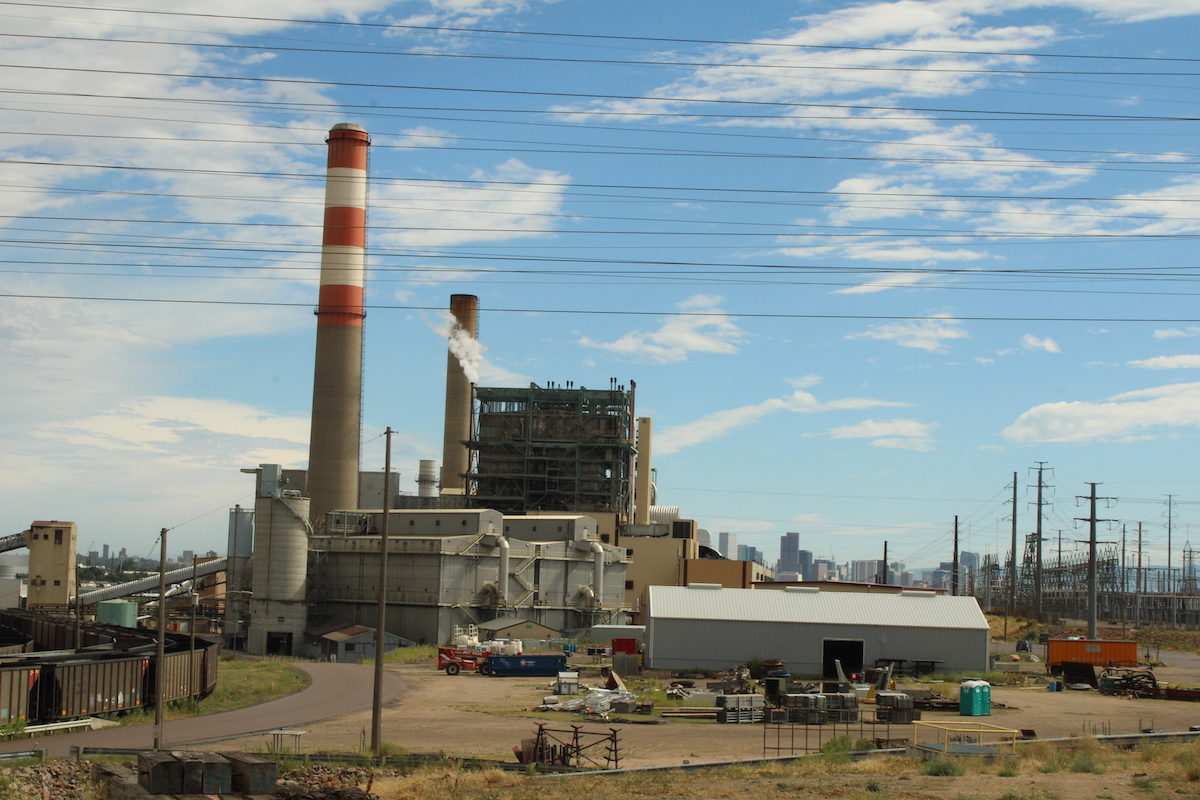A Review of Denver’s Overlooked Environmental Justice Offenders — the Cherokee and Arapahoe Gas Plants.
Read the full report here
For decades, low-income communities of color in Denver have been disproportionately burdened by pollution from multiple sources, including highways that cut through neighborhoods, oil refineries, and power plants that burn coal and gas. Concentrating pollution in communities of color constitutes environmental racism, defined as:
“intentional or unintentional racial discrimination in environmental policy‐making, enforcement of regulations and laws, and targeting of communities for the disposal of toxic waste and siting of polluting industries.”
Xcel Energy’s Cherokee and Arapahoe gas plants are textbook examples of environmental racism since they are located in the two areas of Denver with majority Hispanic/Latino populations. The power plants reside on land that is the traditional territory of the Arapaho, Ute, and Cheyenne People and took the sacred tribal names of the Cherokee and Arapaho without consent. Each year, the plants spew dangerous air pollutants into surrounding neighborhoods that have a higher percentage of people of color than most of Colorado, a lower median household income, and higher overall health burdens compared to the Denver metro area.
Our recently released environmental justice review of Xcel Energy’s gas plants in Denver summarizes these demographic, pollution, and health indicators within three miles of the Cherokee and Arapahoe gas plants to better understand the environmental and socioeconomic vulnerabilities of the Coloradans who live near the plants.
Here is what we learned:
1. Xcel’s Denver gas plants are major polluters and a serious harm to human health.
Nitrogen oxide (NOx), Sulfur dioxide (SO2), and Carbon dioxide (CO2) are the primary air pollutants emitted by gas-fired power plants like Cherokee and Arapahoe. These pollutants form smog, they cause and inflame respiratory and cardiac health problems, and they accelerate our climate crisis. Notably, the emissions from the Cherokee gas plants consistently rank it among the most polluting gas plants in the state for each pollutant, meaning north Denver is burdened by the pollution from two of Colorado’s most polluting gas plants in one location.
2. Xcel Energy’s gas plants are located in low-income communities of color with higher-than-average health burdens and rates of COVID-19.
Xcel Energy’s gas plants are both located in areas of Denver where the population is predominantly Hispanic/Latino, marked by orange in the figure below. People of color account for 71 percent of the population within three miles of the Cherokee gas plant, and 45 percent for the population within three miles of the Arapahoe gas plant. These are remarkably high shares given people of color account for only 32 percent of the statewide population.
Communities adjacent to the Cherokee and Arapahoe gas plants also suffer from more health problems than the rest of the Denver metro area. Figure 8 shows higher rates of asthma, cancer, high blood pressure, and diabetes for those who live near Xcel Energy’s gas plants in Denver, with the exception of a relatively low rate of cancer near the Arapahoe gas plant.
3. Xcel Energy’s gas plants are located in parts of Denver that are already disproportionately affected by many combined sources of localized pollution, and by climate change.
The Environmental Protection Agency’s EJScreen tracks 11 different environmental indicators that help to measure the presence of compounding localized pollution sources on a population. In the three-mile area surrounding the Cherokee gas plants, nine of those 11 indicators are at or above the 84th percentile statewide. Four of those indicators are in the top fifth percentile for Colorado, meaning they are worse than at least 95 percent of the state when considering these pollution factors. The population within a three-mile radius of the Arapahoe gas plant also faces significant environmental risk factors, with 10 of the 11 environmental indicators above the 75th percentile for the state of Colorado.
The neighborhoods adjacent to the Cherokee and Arapahoe gas plants have the highest heat vulnerability scores, shown in the figure below in red for north and southwest Denver where the plants are located. These parts of Denver appear to experience the Urban Heat Island Effect more than other parts of the city, meaning that as temperatures rise due to human-induced climate change, the areas around Xcel’s gas plants will experience some of the highest temperatures and related health risks.
These longstanding injustices demonstrate the opportunity for Colorado’s largest electricity provider,Xcel Energy, to work with Colorado’s largest city, Denver, and its impacted community members to plan for a transition off of fossil fuels to a more equitable, clean energy future that promotes healthy neighborhoods for everyone.
While one of the Cherokee gas plants (Cherokee 4) is scheduled to retire by 2028, the newer Cherokee gas plant (Cherokee CC) is currently projected to burn gas in north Denver until 2055 — some 25 years beyond the date that Denver has committed to transitioning to 100 percent renewable energy, and five years past Xcel’s goal of achieving a zero-carbon grid. The contract that Xcel Energy has with Onward Energy for the electricity produced by the Arapahoe gas plant expires in 2023, though the future of the Arapahoe plant after 2023 is unclear. In Xcel Energy’s 2021 Electric Resource Plan, currently being reviewed by the Colorado Public Utilities Commission, it is not yet known whether Xcel Energy will propose to extend its use of the Arapahoe gas plant in a new contract or let it expire in 2023.
In the pursuit of environmental justice, climate action, and Denver’s goal of 100 percent renewable electricity by 2030, Xcel Energy should consult with local communities and the City of Denver government to come up with plans to retire the Cherokee and Arapahoe gas plants by 2030 at the latest.
